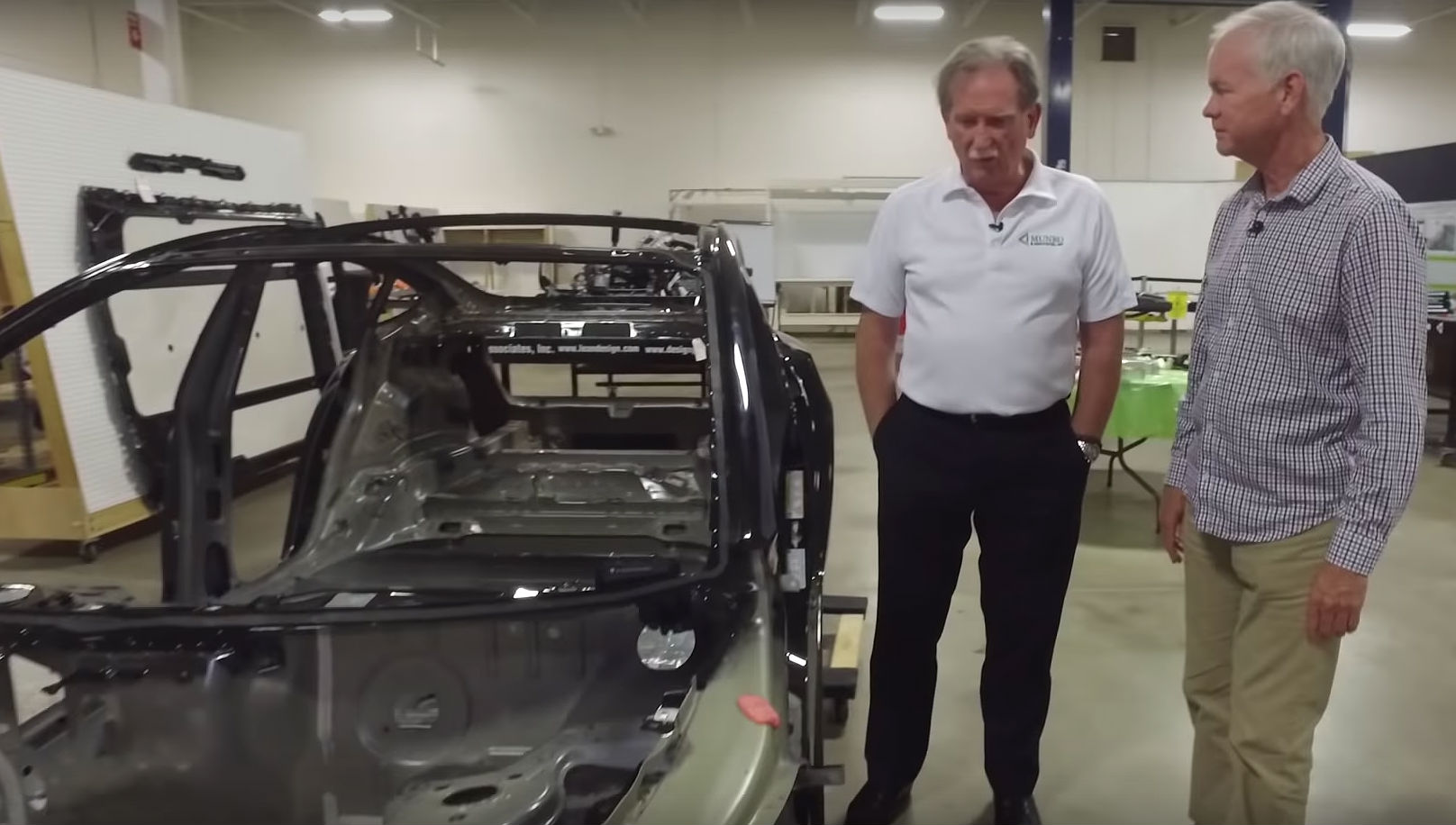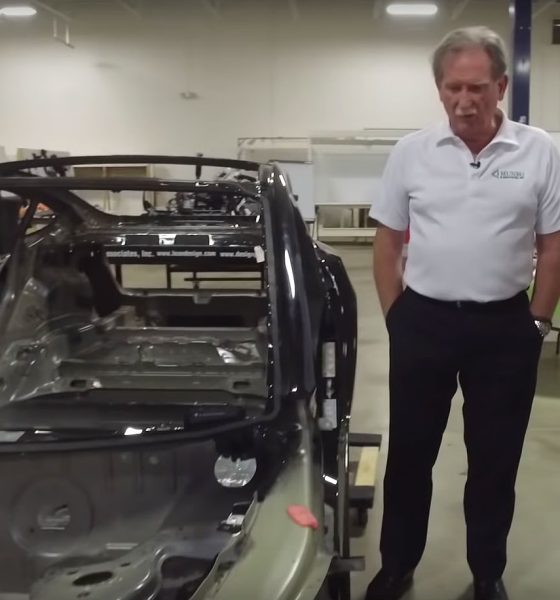

News
Tesla Model 3 analysis triggers legal woes for teardown expert Sandy Munro
Detroit veteran Sandy Munro of Munro & Associates is reportedly being threatened with a lawsuit over his teardown and analysis of the Tesla Model 3. The possible lawsuit was mentioned briefly by Autoline Network host John McElroy during a recent episode of Ask Autoline on YouTube.
McElroy only provided very few details about Munro’s legal troubles, simply stating that the threat of a lawsuit was coming from an entity connected to the Model 3 teardown and analysis. The legal troubles of the teardown expert have resulted in several speculations about the identity of the possible plaintiff, with Tesla critics at one point suggesting that Tesla itself was probably behind the threat of legal action against Munro.
These speculations were promptly curbed by CNBC reporter Lora Kolodny, who was able to get in touch with Munro himself through email. Kolodny clarified in a Twitter post that Munro is not under threat of being sued by Tesla, nor by any TSLA bulls or bears; rather, it is from a corporation that would remain unnamed for now. Munro also informed the CNBC reporter that he had signed a contract limiting his ability to do press, at least for the time being.
“This has nothing to do with [Tesla] or the different factions; bulls or bear(s). There is nothing I can do until they publish their report,” Munro wrote.
Munro’s legal woes resulting from his teardown of the Model 3 comes as investment bank UBS concluded that Tesla would not be able to make any money from the $35,000 base trim of the electric sedan. UBS’ findings stand in stark contrast with those of Munro’s, who estimated that the $35,000 Standard trim Model 3 could give Tesla an 18% profit. It should be noted that both UBS and Munro & Associates are only estimating the costs of the base Model 3, particularly since Tesla is expected to start production of the electric car’s Standard trim by Q1 2019.
While UBS and Munro & Associates have their differences about the profitability of the $35,000 Standard trim Model 3, both firms agree that the technology present in the electric car is beyond that of competitors like the Chevy Bolt EV. When explaining why he had to “eat crow” with regards to the Model 3 (he was initially skeptical of the vehicle due to its fit and finish), Munro noted that Tesla’s battery pack in the electric car is the best he has seen to date. This sentiment was shared by UBS in its study of the Model 3, with the bank stating that Tesla’s battery packs have a cost advantage due to its cylindrical cells, which are more economical than the pouch cells Chevrolet opted to use in the Bolt.
Just like Munro, UBS was also impressed with Tesla’s powertrain in the Model 3, which was developed entirely in-house. UBS noted that this is completely different from GM’s strategy with the Bolt, since LG supplied roughly 90% of the electric car’s powertrain content. Part of UBS’ report was the conclusion that Tesla delivered “the best powertrain at the lowest cost,” and that the Model 3’s powertrain is “next-gen military-grade tech years ahead of its peers.”
UBS’ report claims that Tesla would be losing about $5,900 for every $35,000 Standard trim Model 3 it sells. Nevertheless, it must also be noted that when UBS conducted an analysis of the Chevy Bolt last year, the investment bank concluded that GM was losing $7,400 on every Bolt that was sold at its $37,000 price tag before government incentives. UBS was quite optimistic about GM’s plans for a self-driving car ride-sharing service, which could give the veteran automaker recurring revenue. That said, UBS is also not accounting for Tesla’s possible revenue from the Tesla Network, the company’s planned self-driving car ride-sharing service.
Watch Autoline’s John McElroy briefly discuss Sandy Munro’s possible legal troubles resulting from his Model 3 analysis in the video below.

News
Tesla FSD fleet is nearing 7 billion total miles, including 2.5 billion city miles
As can be seen on Tesla’s official FSD webpage, vehicles equipped with the system have now navigated over 6.99 billion miles.

Tesla’s Full Self-Driving (Supervised) fleet is closing in on almost 7 billion total miles driven, as per data posted by the company on its official FSD webpage.
These figures hint at the massive scale of data fueling Tesla’s rapid FSD improvements, which have been quite notable as of late.
FSD mileage milestones
As can be seen on Tesla’s official FSD webpage, vehicles equipped with the system have now navigated over 6.99 billion miles. Tesla owner and avid FSD tester Whole Mars Catalog also shared a screenshot indicating that from the nearly 7 billion miles traveled by the FSD fleet, more than 2.5 billion miles were driven inside cities.
City miles are particularly valuable for complex urban scenarios like unprotected turns, pedestrian interactions, and traffic lights. This is also the difference-maker for FSD, as only complex solutions, such as Waymo’s self-driving taxis, operate similarly on inner-city streets. And even then, incidents such as the San Francisco blackouts have proven challenging for sensor-rich vehicles like Waymos.
Tesla’s data edge
Tesla has a number of advantages in the autonomous vehicle sector, one of which is the size of its fleet and the number of vehicles training FSD on real-world roads. Tesla’s nearly 7 billion FSD miles then allow the company to roll out updates that make its vehicles behave like they are being driven by experienced drivers, even if they are operating on their own.
So notable are Tesla’s improvements to FSD that NVIDIA Director of Robotics Jim Fan, after experiencing FSD v14, noted that the system is the first AI that passes what he described as a “Physical Turing Test.”
“Despite knowing exactly how robot learning works, I still find it magical watching the steering wheel turn by itself. First it feels surreal, next it becomes routine. Then, like the smartphone, taking it away actively hurts. This is how humanity gets rewired and glued to god-like technologies,” Fan wrote in a post on X.
News
Tesla starts showing how FSD will change lives in Europe
Local officials tested the system on narrow country roads and were impressed by FSD’s smooth, human-like driving, with some calling the service a game-changer for everyday life in areas that are far from urban centers.

Tesla has launched Europe’s first public shuttle service using Full Self-Driving (Supervised) in the rural Eifelkreis Bitburg-Prüm region of Germany, demonstrating how the technology can restore independence and mobility for people who struggle with limited transport options.
Local officials tested the system on narrow country roads and were impressed by FSD’s smooth, human-like driving, with some calling the service a game-changer for everyday life in areas that are far from urban centers.
Officials see real impact on rural residents
Arzfeld Mayor Johannes Kuhl and District Administrator Andreas Kruppert personally tested the Tesla shuttle service. This allowed them to see just how well FSD navigated winding lanes and rural roads confidently. Kruppert said, “Autonomous driving sounds like science fiction to many, but we simply see here that it works totally well in rural regions too.” Kuhl, for his part, also noted that FSD “feels like a very experienced driver.”
The pilot complements the area’s “Citizen Bus” program, which provides on-demand rides for elderly residents who can no longer drive themselves. Tesla Europe shared a video of a demonstration of the service, highlighting how FSD gives people their freedom back, even in places where public transport is not as prevalent.
What the Ministry for Economic Affairs and Transport says
Rhineland-Palatinate’s Minister Daniela Schmitt supported the project, praising the collaboration that made this “first of its kind in Europe” possible. As per the ministry, the rural rollout for the service shows FSD’s potential beyond major cities, and it delivers tangible benefits like grocery runs, doctor visits, and social connections for isolated residents.
“Reliable and flexible mobility is especially vital in rural areas. With the launch of a shuttle service using self-driving vehicles (FSD supervised) by Tesla in the Eifelkreis Bitburg-Prüm, an innovative pilot project is now getting underway that complements local community bus services. It is the first project of its kind in Europe.
“The result is a real gain for rural mobility: greater accessibility, more flexibility and tangible benefits for everyday life. A strong signal for innovation, cooperation and future-oriented mobility beyond urban centers,” the ministry wrote in a LinkedIn post.
News
Tesla China quietly posts Robotaxi-related job listing
Tesla China is currently seeking a Low Voltage Electrical Engineer to work on circuit board design for the company’s autonomous vehicles.

Tesla has posted a new job listing in Shanghai explicitly tied to its Robotaxi program, fueling speculation that the company is preparing to launch its dedicated autonomous ride-hailing service in China.
As noted in the listing, Tesla China is currently seeking a Low Voltage Electrical Engineer to work on circuit board design for the company’s autonomous vehicles.
Robotaxi-specific role
The listing, which was shared on social media platform X by industry watcher @tslaming, suggested that Tesla China is looking to fill the role urgently. The job listing itself specifically mentions that the person hired for the role will be working on the Low Voltage Hardware team, which would design the circuit boards that would serve as the nervous system of the Robotaxi.
Key tasks for the role, as indicated in the job listing, include collaboration with PCB layout, firmware, mechanical, program management, and validation teams, among other responsibilities. The role is based in Shanghai.
China Robotaxi launch
China represents a massive potential market for robotaxis, with its dense urban centers and supportive policies in select cities. Tesla has limited permission to roll out FSD in the country, though despite this, its vehicles have been hailed as among the best in the market when it comes to autonomous features. So far, at least, it appears that China supports Tesla’s FSD and Robotaxi rollout.
This was hinted at in November, when Tesla brought the Cybercab to the 8th China International Import Expo (CIIE) in Shanghai, marking the first time that the autonomous two-seater was brought to the Asia-Pacific region. The vehicle, despite not having a release date in China, received a significant amount of interest among the event’s attendees.








